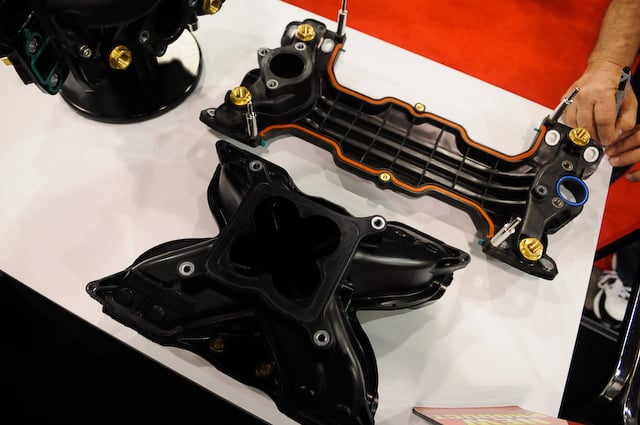

The engine air filter, for example, will cause some restriction of airflow. There is typically always some restriction of the airflow even if the throttle valve is wide open.
#RACERENDER INTAKE MANIFOLD PRESSURE OBJECT FULL#
It is interesting to note that even at a wide-open throttle at or near sea-level in a normally-aspirated engine, you are not likely to observe manifold pressure equal to full atmospheric pressure. Less restricted airflow allows the air pressure within the intake manifold to trend back towards atmospheric pressure. Image Credit: Chapter 7 Pilot’s Handbook of Aeronautical Knowledge In this case it is in the open position (full throttle). That opens up that throttle valve allowing more air to enter the engine. Here’s a visual of the throttle valve on a carbureted engine: An illustration of the throttle valve. When we are ready to depart, the throttle is advanced. We are severely restricting the cylinder of air at idle and there is not much moving through the intake manifold and into the cylinder. This is because suction is being generated by the pistons, however, the throttle is just about fully closed at idle speed. Image Credit: Chapter 7 Pilot’s Handbook of Aeronautical KnowledgeĪfter a successful engine start, you will notice that as it starts to run, the manifold pressure will drop from a reading at or near atmospheric pressure to 12-15” of manifold pressure. On a standard day, the atmospheric pressure is 29.92 inHg and the manifold pressure gauge needle will point to that value prior to engine start.įor more reading on this, see our article on why standard air pressure is 29.92inHG and why manifold pressure is measured in inches of mercury. When the engine is not turning, and the cylinders are not creating that vacuum during the intake stroke, the air pressure in the manifold will equal the outside air pressure, and the manifold gauge will indicate that outside air pressure. Manifold Pressure When the Engine is Operating In these types of aircraft, the power is set using only the RPM gauge, and since your engine is likely not turbocharged, it is very unlikely that you would be able to exceed the manifold pressure limit for the engine. If you fly an aircraft without a cockpit-adjustable propeller, you probably don’t even have a manifold pressure gauge. When we adjust the throttle setting, we are controlling how much of that atmospheric air (mixed with fuel) is reaching the cylinder. Those four, six, or eight cylinders are trying to suck in a whole bunch of air.

So, when you think about it, the engine is really kind of a big vacuum pump. The intake manifold is a pipe that transports the air/fuel mixture into the cylinder as the piston moves from the top to the bottom of the cylinder during the intake stroke.Īs a refresher, here is the cycle of a four-stroke engine: Image Credit: Chapter 7 Pilot’s Handbook of Aeronautical Knowledge

Manifold pressure is a measure of the absolute pressure of the fuel/air mixture within the intake manifold of the aircraft engine. Perhaps the best way to better understand this manifold pressure and prop RPM relationship is to take a closer look at what manifold pressure really is. There is a bit more to this story, though. Reducing an aircraft’s propeller RPM causes a higher manifold pressure because as the RPMs decrease, the engine slows, creating less suction during the intake stroke which reduces the vacuum in the intake manifold, allowing the air pressure in the manifold to rise towards atmospheric pressure. Why does lower propeller RPM cause higher manifold pressure? The different combinations of manifold pressure and propeller RPM are what allow us to set accurate power settings and obtain the performance outlined within the PIlot’s Operating Handbook. The relationship between manifold pressure (MP) and propeller RPM is a complex one.


 0 kommentar(er)
0 kommentar(er)
